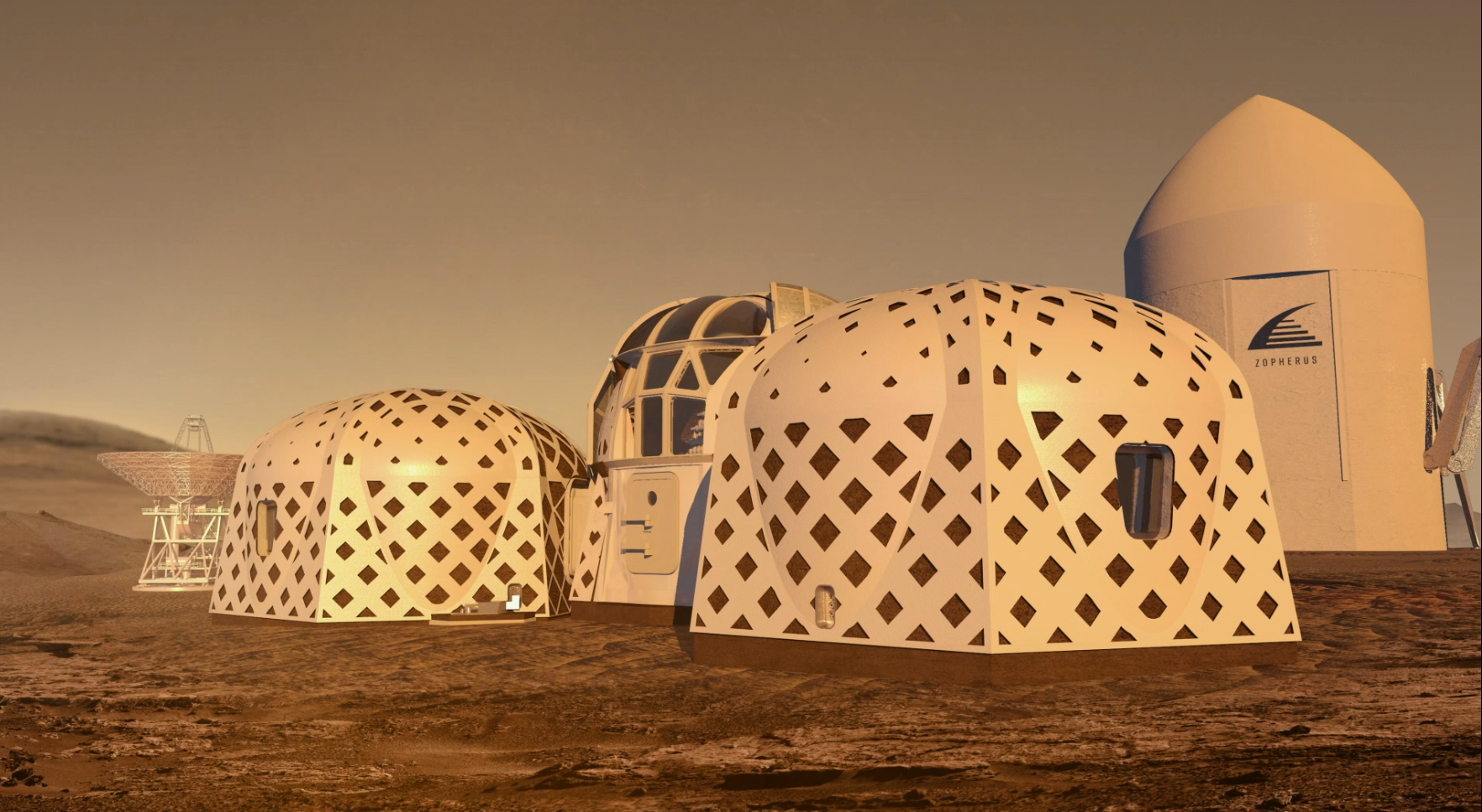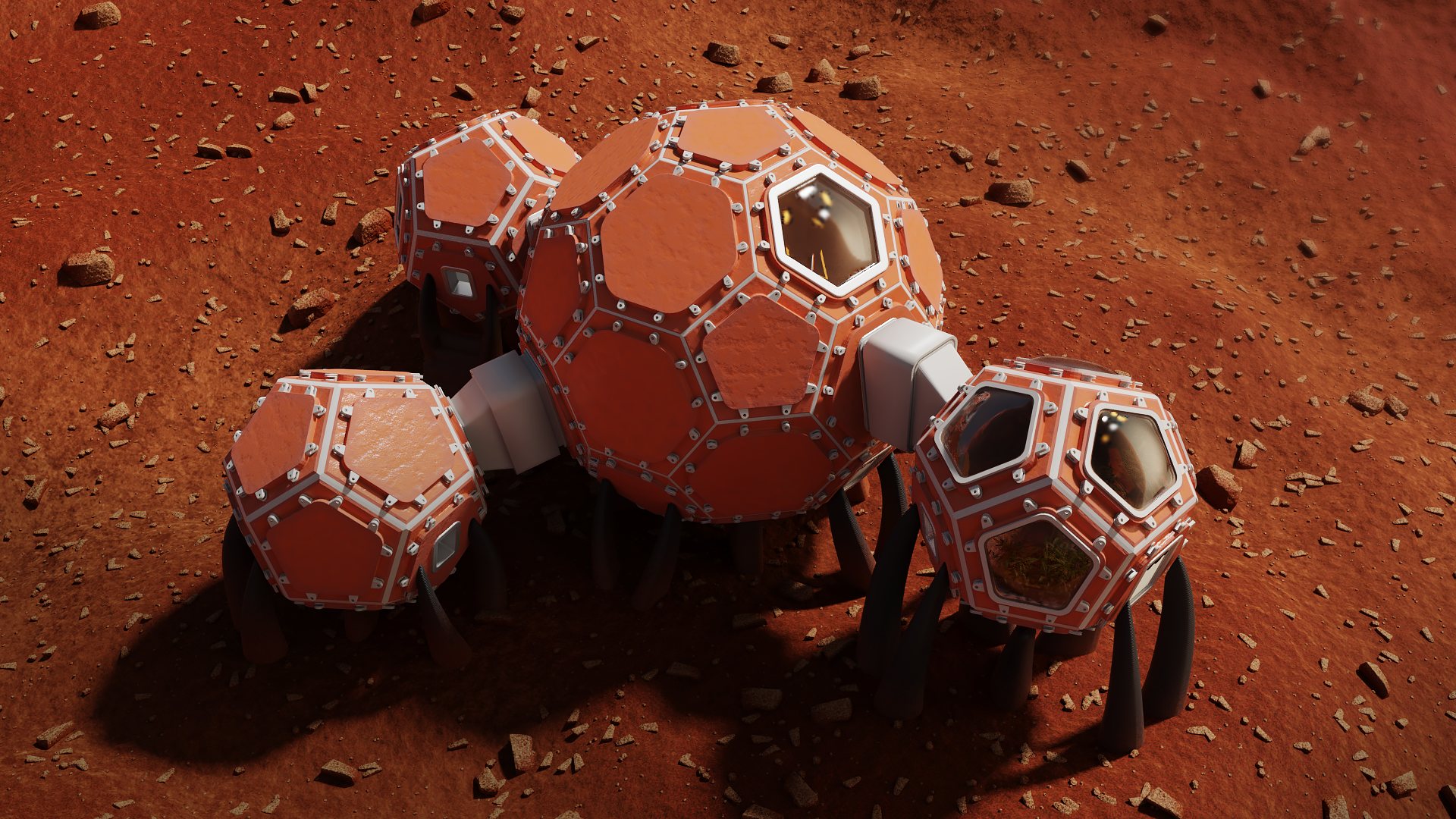In This Week’s Star
- Top 3 Teams Share $100,000 Prize in Complete Virtual Construction Level of 3D-Printed Habitat Challenge
- Guiding Science in Space: The Women of Marshall’s Payload Operations Cadre
- NASA Technicians Install 500 Sensors, 18 miles of Cables in SLS Engine Section
- Douglas Brinkley Opens ‘NASA in the South’ Symposium Presentations
- Marshall Team Members ‘Spark The Vision’ at Women’s History Month Celebration
- Science, Technology, Engineering Jamboree Fosters Innovation at Marshall
- This Week in NASA History: Saturn IB/V Instrument Unit Contract Awarded to IBM – March 31, 1965
Top 3 Teams Share $100,000 Prize in Complete Virtual Construction Level of 3D-Printed Habitat Challenge
By Janet Sudnik
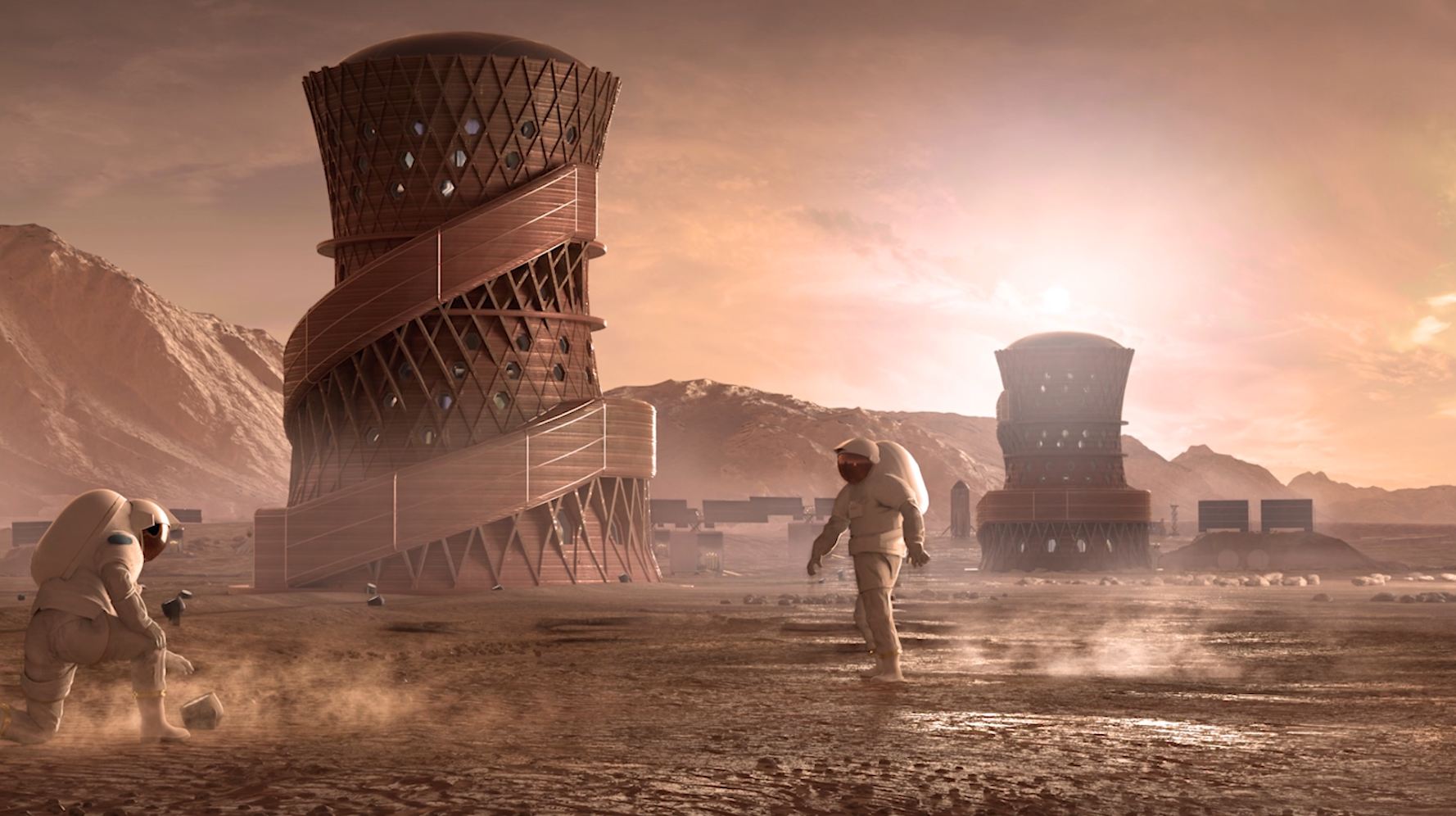
Teams competing in NASA’s 3D-Printed Habitat Challenge completed the latest level of the competition – complete virtual construction – and the top three were awarded a share of the $100,000 prize purse. The competition is part of the agency’s Centennial Challenges program, which is managed at NASA’s Marshall Space Flight Center.
This stage of the challenge required teams to create a full-scale habitat design, using modeling software. This level built upon an earlier stage that also required virtual modeling.
Eleven team entries were scored and awarded points based on architectural layout, programming, efficient use of interior space, and the 3D-printing scalability and constructability of the habitat. Teams also prepared short videos providing insight into their designs as well as miniature 3D-printed models that came apart to showcase the interior design. Points were also awarded for aesthetic representation and realism. After evaluation by a panel of judges, NASA and challenge partner Bradley University of Peoria, Illinois, awarded the following teams:
- SEArch+/Apis Cor – New York – $33,954.11
- Zopherus – Rogers, Arkansas – $33,422.01
- Mars Incubator – New Haven, Connecticut – $32,623.88
The 3D-Printed Habitat Challenge, which began in 2015, is a competition to create sustainable shelters suitable for the Moon, Mars or beyond using resources available on-site in these locations. The multi-level 3D-Printed Habitat Challenge puts teams to the test in several areas of 3D-printing, including modeling software, material development and construction. In addition to aiding human space exploration, technologies sought from this competition could also lead to lower-cost housing solutions on Earth and other benefits.
The challenge will culminate with a head-to-head subscale structure print May 1-4, and the awarding of an $800,000 prize purse. Visit the challenge home page to keep up with the latest updates and team progress.
Sudnik, an ASRC Federal/Analytical Services employee, supports the Office of Strategic Analysis & Communications.
Guiding Science in Space: The Women of Marshall’s Payload Operations Cadre
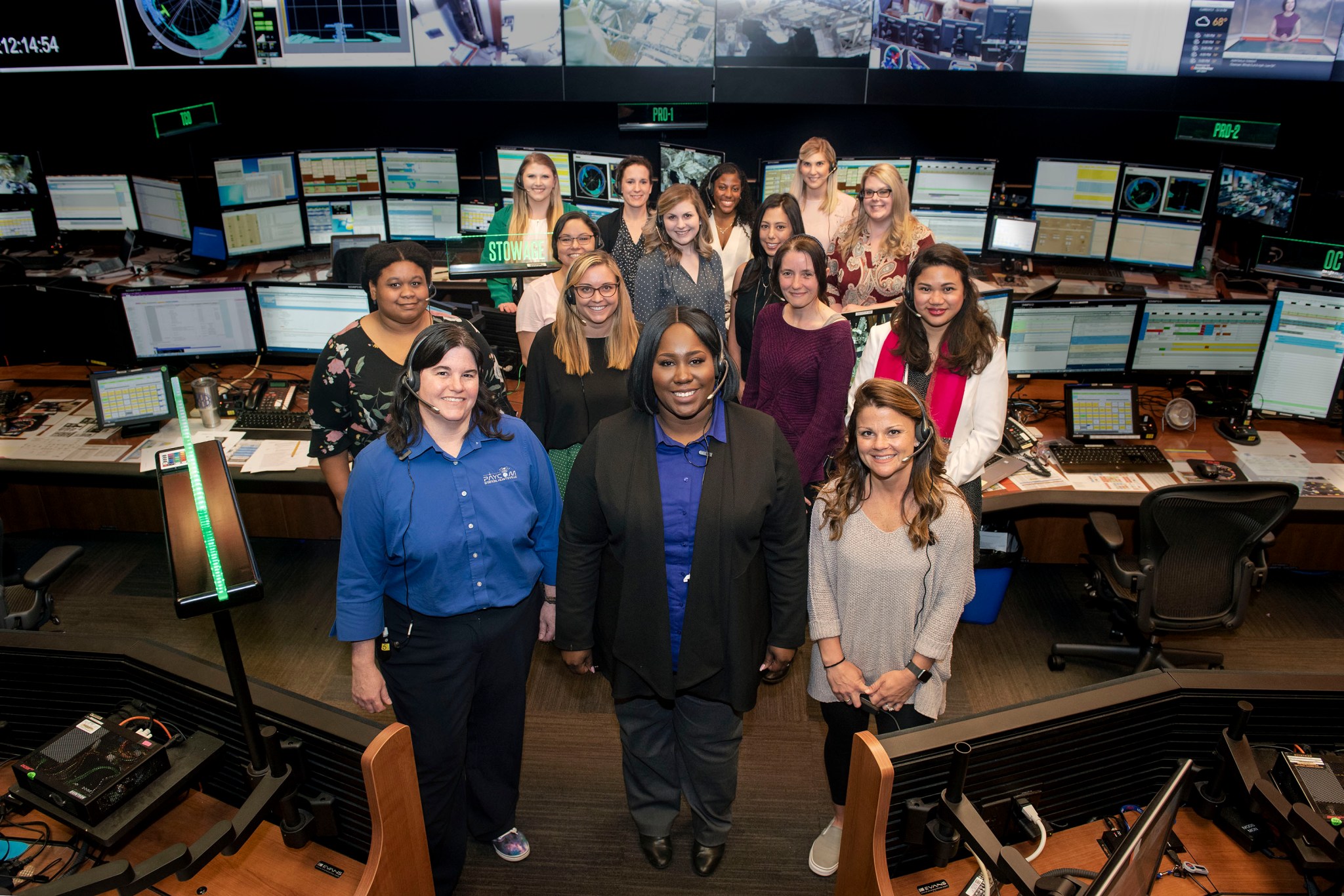
As Women’s History Month concludes March 31, the women of the Payload Operations Integration Center at NASA’s Marshall Space Flight Center salute their female colleagues and customers on console and in laboratories around the nation and aboard the International Space Station. Among the Marshall payload operations cadre are, first row from left, Payload Communications Officer Penny Pettigrew, Payload Operations Director Jessica Caudle and Inventory Specialist Keri Baugher; second row, Payload Communications Officer Kassandra Stephens, Payload Rack Officers Kristi Webster and Theresa Crider, and Operations Controller Gayleen Ijames; third row, Payload Rack Officer Amy Schaper and Data Management Coordinators Betsy Baker and Jennifer Jennings; and fourth row, Data Management Coordinator Haleigh Sisson, Timeline Change Officer Samantha Gurley, Microgravity Glovebox Coordinator Kaila Myrick, Operations Controller Amber Sparkman and Marshall Ground Controller Alisha Hollander. The Payload Operations Integration Center team works around the clock to support all space station scientific activities, paving the way for forthcoming deep space exploration missions. (NASA/MSFC/Charles Beason)
NASA Technicians Install 500 Sensors, 18 miles of Cables in SLS Engine Section
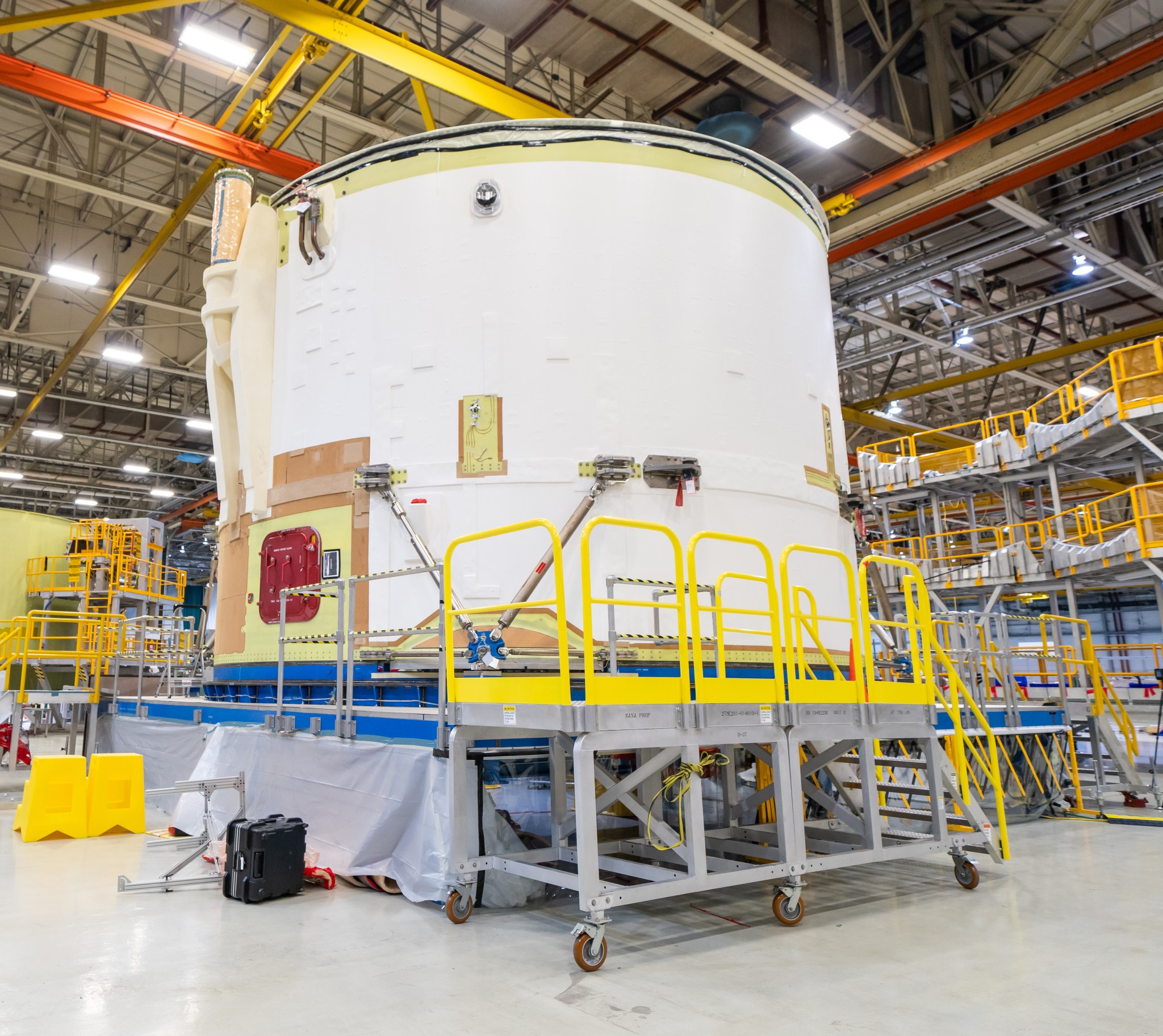
NASA and Boeing have completed the majority of outfitting for the core stage engine section of the agency’s Space Launch System at NASA’s Michoud Assembly Facility. The engine section, located at the bottom of the massive core stage, is one of the most complex parts of the rocket. Technicians installed more than 500 sensors, 18 miles of cables and numerous other critical systems for mounting, controlling and delivering fuel to the rocket’s four RS-25 engines. The core stage tanks hold cryogenic liquid hydrogen and liquid oxygen that the engines combust to produce 2 million pounds of thrust to help send SLS to space for missions to the Moon. On the exterior of the engine section, technicians attached cork insulation for thermal protection and painted it white, as well as finished other systems, including fittings where the solid rocket boosters will attach. (NASA/Jude Guidry)
Douglas Brinkley Opens ‘NASA in the South’ Symposium Presentations
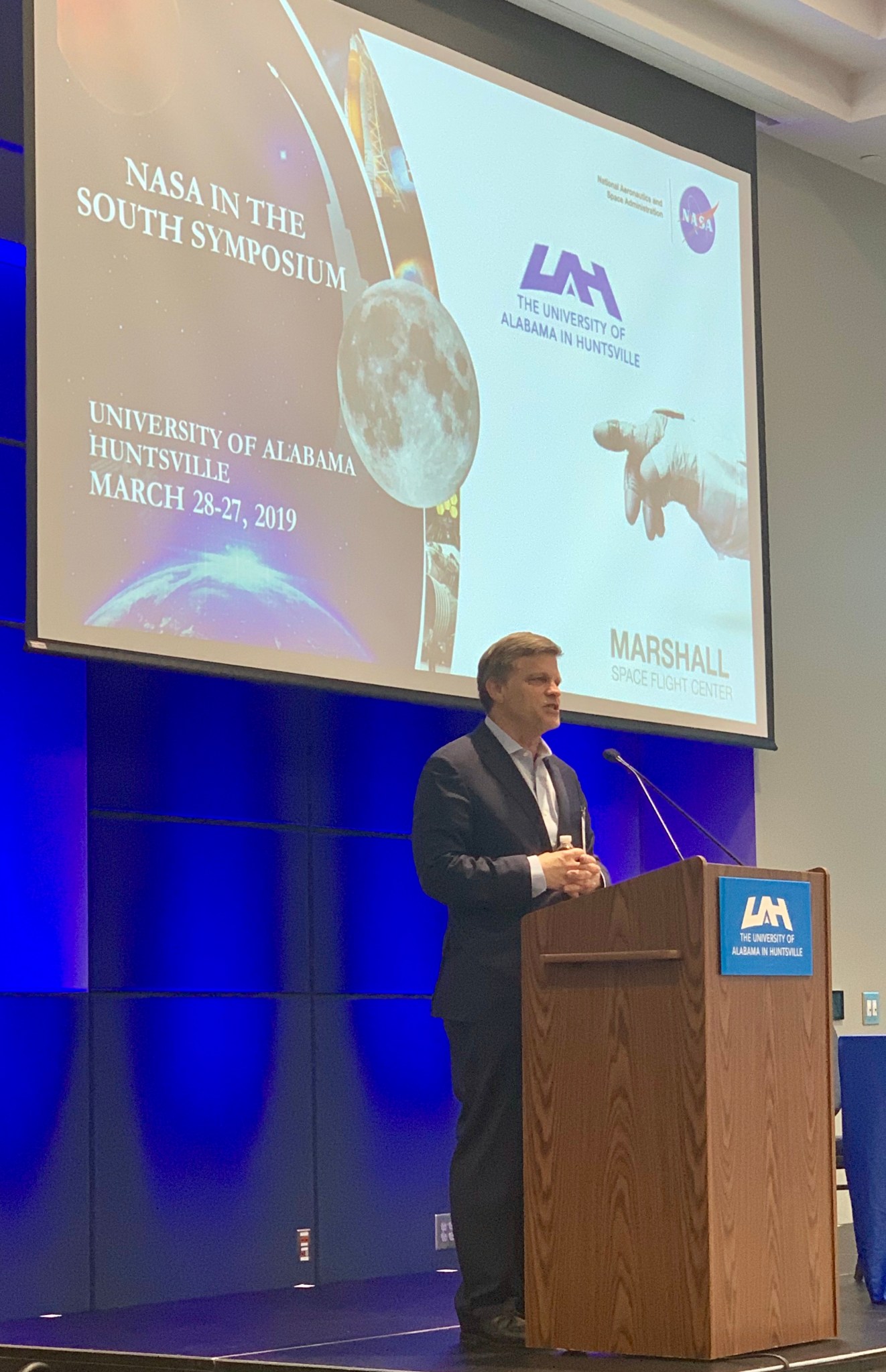
Douglas Brinkley, opening keynote speaker at the NASA in the South Symposium March 28, speaks to attendees following the introduction from Jody Singer, director of NASA’s Marshall Space Flight Center. Brinkley, professor of history at Rice University in Houston, Texas, is the Katherine Tsanoff Brown Chair in humanities, presidential historian for CNN and a contributing editor at Vanity Fair. Marshall’s History Office and the History Department at the University of Alabama in Huntsville partnered to host the symposium March 28-29 to address the impact of NASA on the Southern United States. The symposium included keynote presentations and panel discussions from historians from all around the South. For more information on Marshall’s History program, please visit here. (NASA/Morgan Hopper)
Marshall Team Members ‘Spark The Vision’ at Women’s History Month Celebration
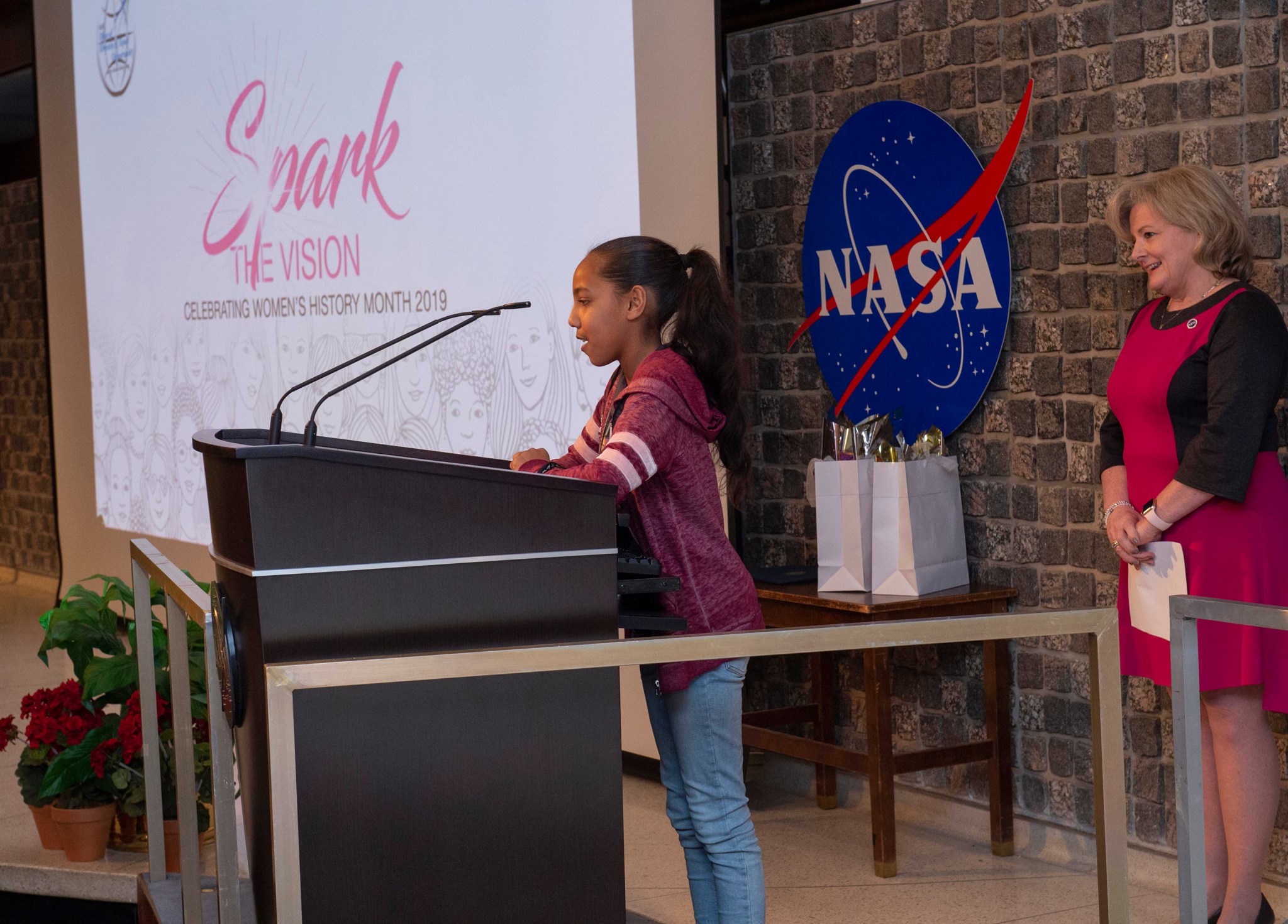
Jasmyn Vanderpool, a student at Oakwood Adventist Academy in Huntsville, describes her morning as a Marshall Space Flight Center mentee at “Spark The Vision,” a celebration of Women’s History Month in Building 4200’s Morris Auditorium on March 27. Looking on is Marshall Center Director Jody Singer, who kicked off the program. Students from Oakwood and local home schools, mentored by Marshall team members, heard from keynote speakers Simone Bridges, owner and chef of Goddess Food Factory in Jacksonville, Florida; and Lyndsay Ferguson, president and CEO of Leadership Greater Huntsville. Performances by students and Marshall team members included a reading of “A Girl With A Dream, A Woman With A Vision,” an original poem by team member Kisha Freed. The program was sponsored by Marshall’s Office of Diversity and Equal Opportunity, which strives to promote diversity, equality and inclusion for all individuals, while providing a workplace that is free from discrimination, including harassment and retaliation. (NASA/Emmett Given)
Science, Technology, Engineering Jamboree Fosters Innovation at Marshall
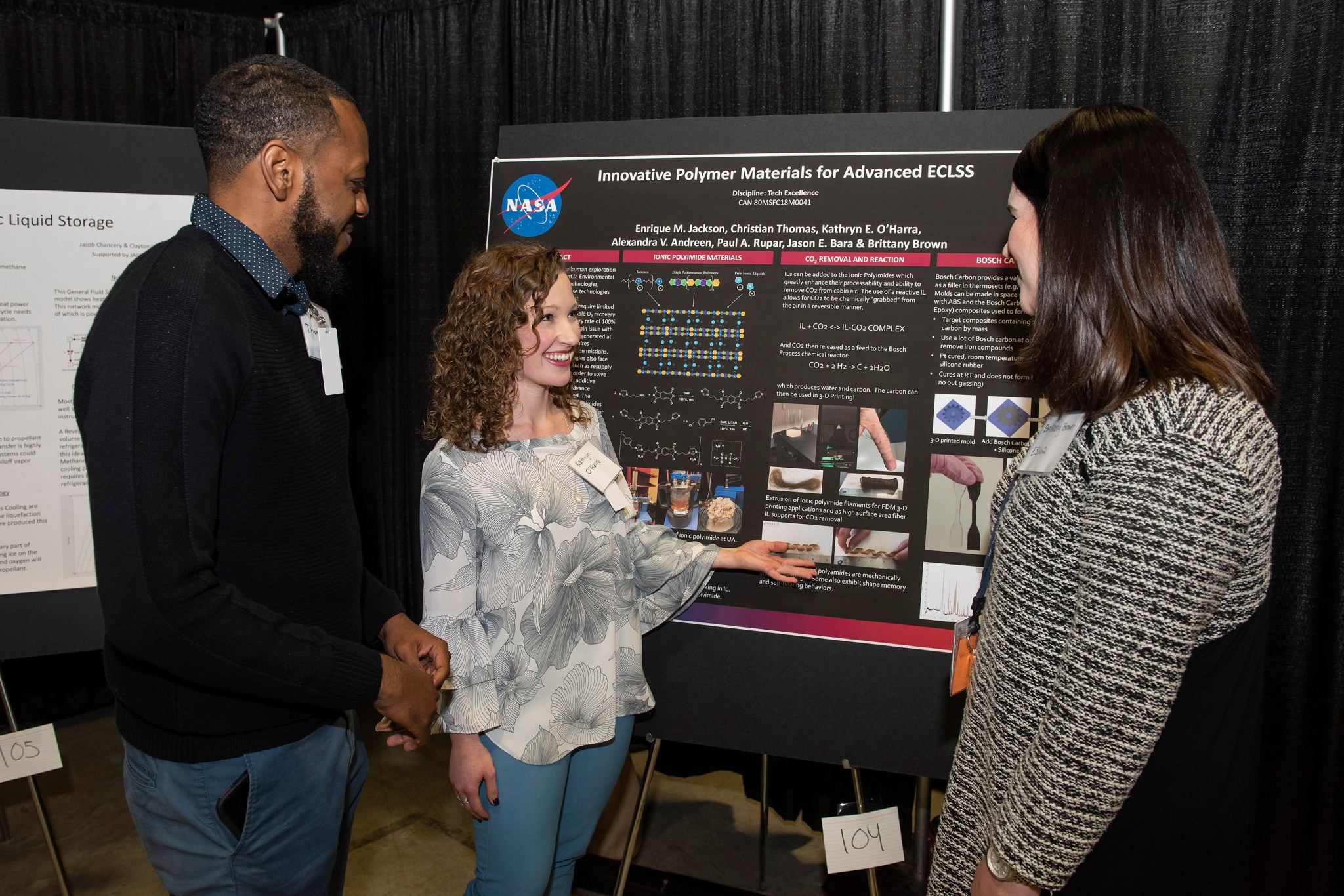
Graduate students Christian Thomas, left, and Kathryn O’Harra, center, discuss their innovative technology poster with NASA Marshall Space Flight Center team member Brittany Brown at this year’s Science, Technology and Engineering Jamboree on March 27. Thomas and O’Harra, students at the University of Alabama in Tuscaloosa, participated in the event through a cooperative agreement with the university. The Jamboree allowed team members the opportunity to discover new and innovative projects happening across Marshall. The event showcased future and current science and technology topics, with a gallery of poster presentations, followed by flash talks at the top of each hour. (NASA/MSFC/Charles Beason)
This Week in NASA History: Saturn IB/V Instrument Unit Contract Awarded to IBM – March 31, 1965
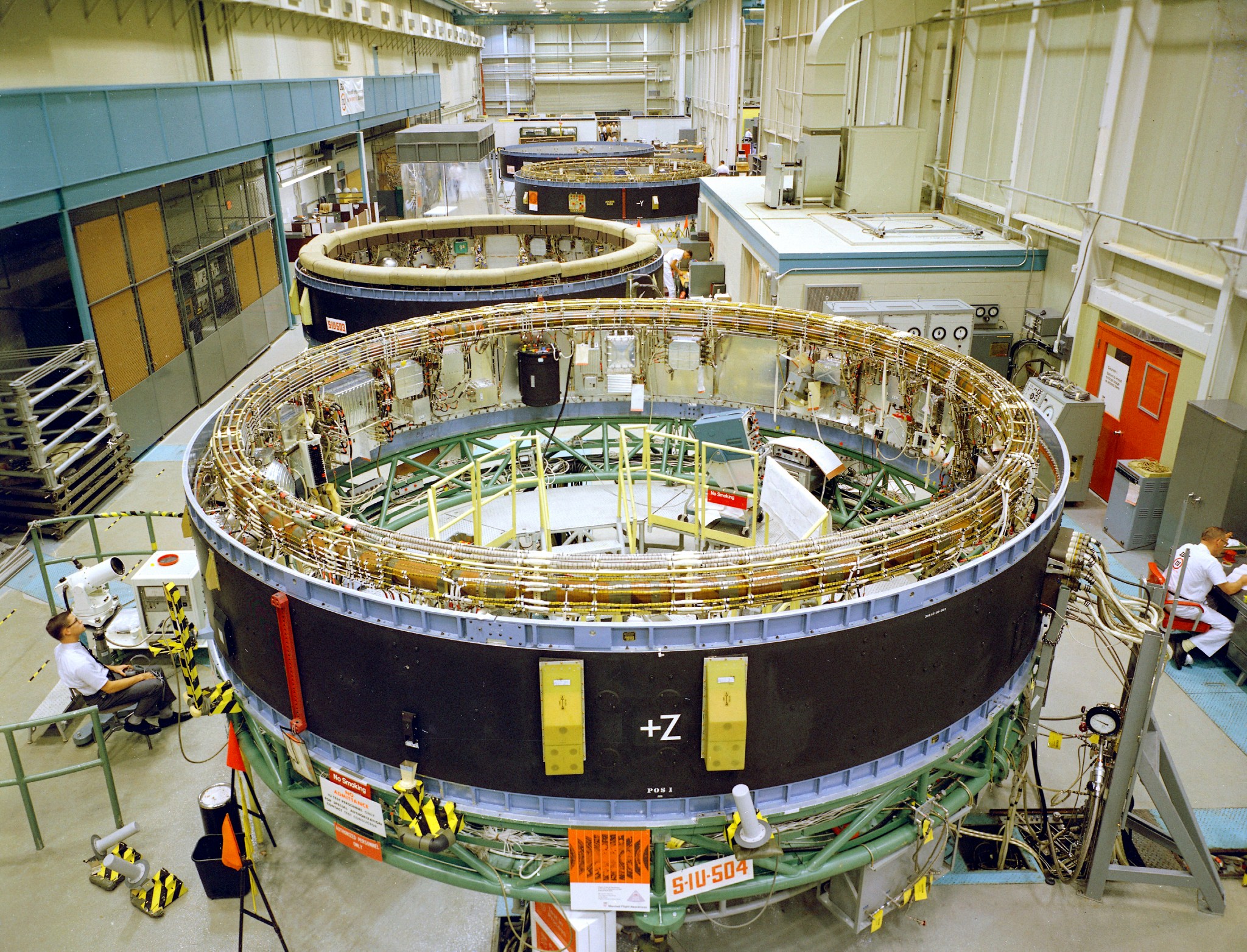
This week in 1965, NASA awarded the Instrument Unit contract, NAS8-1400, to International Business Machines. This was the first major incentive contract to be negotiated in the Saturn IB Program. Designed by NASA’s Marshall Space Flight Center and built by IBM, the Instrument Unit served as the “nerve center” for the Saturn V, providing guidance and control, command and sequence of vehicle functions, telemetry and environmental control. Here, the Instrument Unit is being manufactured in the east high bay at IBM in Huntsville. The Saturn V was designed at Marshall. Now through December 2022, NASA will mark the 50th anniversary of the Apollo Program that landed a dozen astronauts on the Moon between July 1969 and December 1972, and the first U.S. crewed mission – Apollo 8 – that circumnavigated the Moon in December 1968. The NASA History Program is responsible for generating, disseminating and preserving NASA’s remarkable history and providing a comprehensive understanding of the institutional, cultural, social, political, economic, technological and scientific aspects of NASA’s activities in aeronautics and space. For more pictures like this one and to connect to NASA’s history, visit the Marshall History Program’s webpage. (NASA)





























